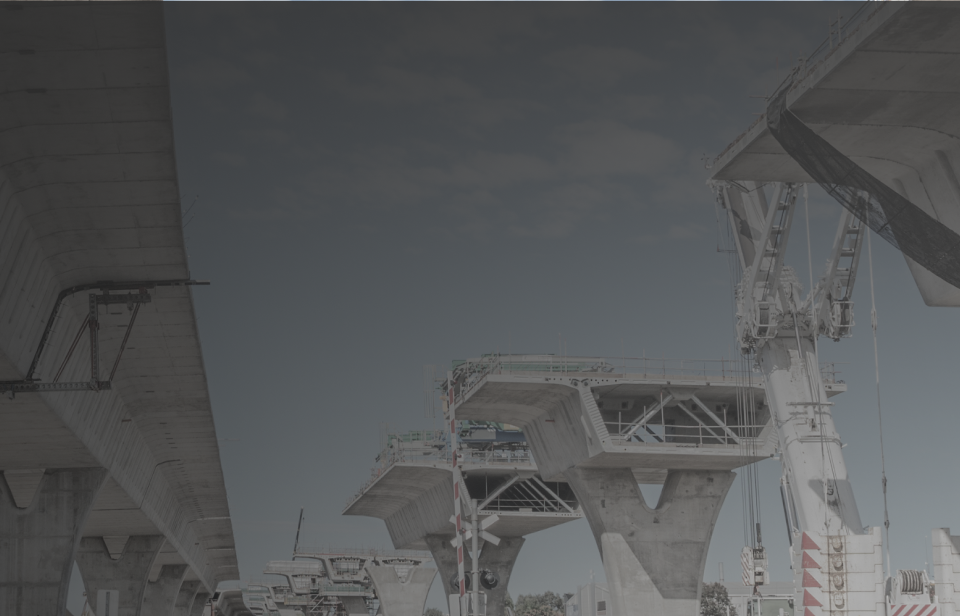
Decarbonising construction: Putting carbon in the business case
This report proposes that an embedded carbon ‘base case’ should be included in all business cases for large infrastructure projects. The proposal follows the ground breaking report released earlier this year, Decarbonising Infrastructure.
Video Snapshot
Watch Infrastructure Partnerships Australia CEO Adrian Dwyer breakdown the key highlights of the report in this 3 minute video.
Summary
An embedded (or embodied) carbon ‘base case’ should be included in all business cases for infrastructure projects and programs over $100 million in capital cost. This should be mandatory for all such projects, with government retaining the option to ‘compete’ a lower carbon outcome through detailed design and procurement. This would establish a framework to move infrastructure procurement to a Time, Quality and Cost + Carbon setting.
This proposal has been developed as a discrete policy solution to address the lack of clarity on how the Australian infrastructure sector will reduce the carbon embedded in the vast amounts of steel, concrete and other materials required to deliver the upcoming project pipeline. This proposed reform is targeted specifically at the pre- and early-stages of a project to consider its carbon footprint in construction, rather than an asset’s operational emissions, which are well established through tools like the Design/As-Built IS Rating Scheme.
This proposal arises out of the rigorous analysis undertaken in Infrastructure Partnerships Australia’s report, Decarbonising Infrastructure, and is intended to be read in conjunction with that wider body of work.

Background
“Governments need to determine the assets they want to buy (being lower-carbon infrastructure), in line with their macro commitments (net zero emissions by 2050), and set these as clear outcomes sought in procurement processes, letting the private sector compete for this lower-carbon work.”
– Infrastructure Partnerships Australia, Decarbonising Infrastructure
In April 2022, Infrastructure Partnerships Australia released Decarbonising Infrastructure, a report setting out a pragmatic agenda for Australia’s governments and industry to drive emissions reductions across all forms of infrastructure, including a set of recommended actions. All Australian states and territories have already committed to net zero carbon emissions by 2050. Most recently, the Federal Government introduced a Bill into Parliament proposing to legislate a 43 per cent reduction in net greenhouse gas emissions from 2005 levels by 2030, and net zero emissions by 2050.1
While many of the changes required to decarbonise will be complex, the policy direction and vision required to make them happen are not, and they can build on commitments and actions already taken by industry and governments.
Investors are increasingly looking beyond financial and economic value in assets to understand their ESG credentials, with carbon profiles and scope for decarbonisation as key considerations.
This includes a sharpened focus on the underlying credentials of assets and an increased focus on whole-of-life outcomes, including end-to-end decarbonisation. A burgeoning pool of capital is available for projects with strong ESG credentials as investors look to adjust their portfolios in response to net zero policies and mitigate their climate risk profile. Nevertheless, investors still face challenges in this space – by the time a brownfield asset is transacted, the opportunity to account for the carbon embedded during its construction has usually long disappeared.
Through Infrastructure Partnerships Australia’s engagement on this report, a critical issue emerged. The pathway to reduce the carbon embedded in the vast amounts of steel, concrete and other materials required to deliver the infrastructure pipeline is unclear. Both the scale of this issue and who bears accountability are also remarkably unclear.
Without reform, the benefits of the coming wave of infrastructure construction could be undermined by the significant economic and environmental costs of unnecessary embedded carbon.
1 | Climate Change Bill 2022 (Cth)
Proposed Mechanism for Reform
States and territories – through their strategic planning and procuring agencies – are best placed to drive this reform, and be responsible for tracking and reporting on data. However, there is a strong case for the Federal Government to make infrastructure funding contingent on adherence to this model – being the inclusion of a carbon base case in project business cases. This goes beyond governments procuring lower-carbon infrastructure, it is also an opportunity for governments to use this policy reform as a lever to ‘buy innovation’ in design and construction processes and materials.
It also provides an imperative for design efficiency – a significant benefit in the face of growing supply constraints and substantive cost escalations.
Common standards and guidelines for calculating a carbon base case will make this reform a long-term success. Whether in an MVP project drawing on simple concrete and steel metrics, or a more sophisticated base case, there are already many operational tools and technology solutions developed by industry experts – both in Australia and overseas – that define, measure, and estimate carbon inclusion. Governments can, and should, take a coordinated approach to investigating and agreeing consistent standards and tools for implementing the carbon base case methodology – as seen with the STA’s Klimatkalkyl carbon calculation tool – and can build on existing work such as the standards set out in PAS 2080 or the IS Rating Scheme. However, establishing a common standard should not delay implementing carbon base cases in project planning.
Infrastructure Partnerships Australia would be happy to leverage the dataset held through the Australia and New Zealand Infrastructure Pipeline (ANZIP) to develop some initial expectations around the potential for decarbonisation across the breadth of the pipeline and contribute to sector-wide analysis of infrastructure’s carbon footprint.

Contact Information
Adrian Dwyer
Chief Executive Officer
Mollie Matich
Head of Policy and Research
Sign up for more Infrastructure Analysis
Sign up for our popular weekly Infrastructure Report newsletter and keep up to date on all the latest developments in the sector.
Sign Up
